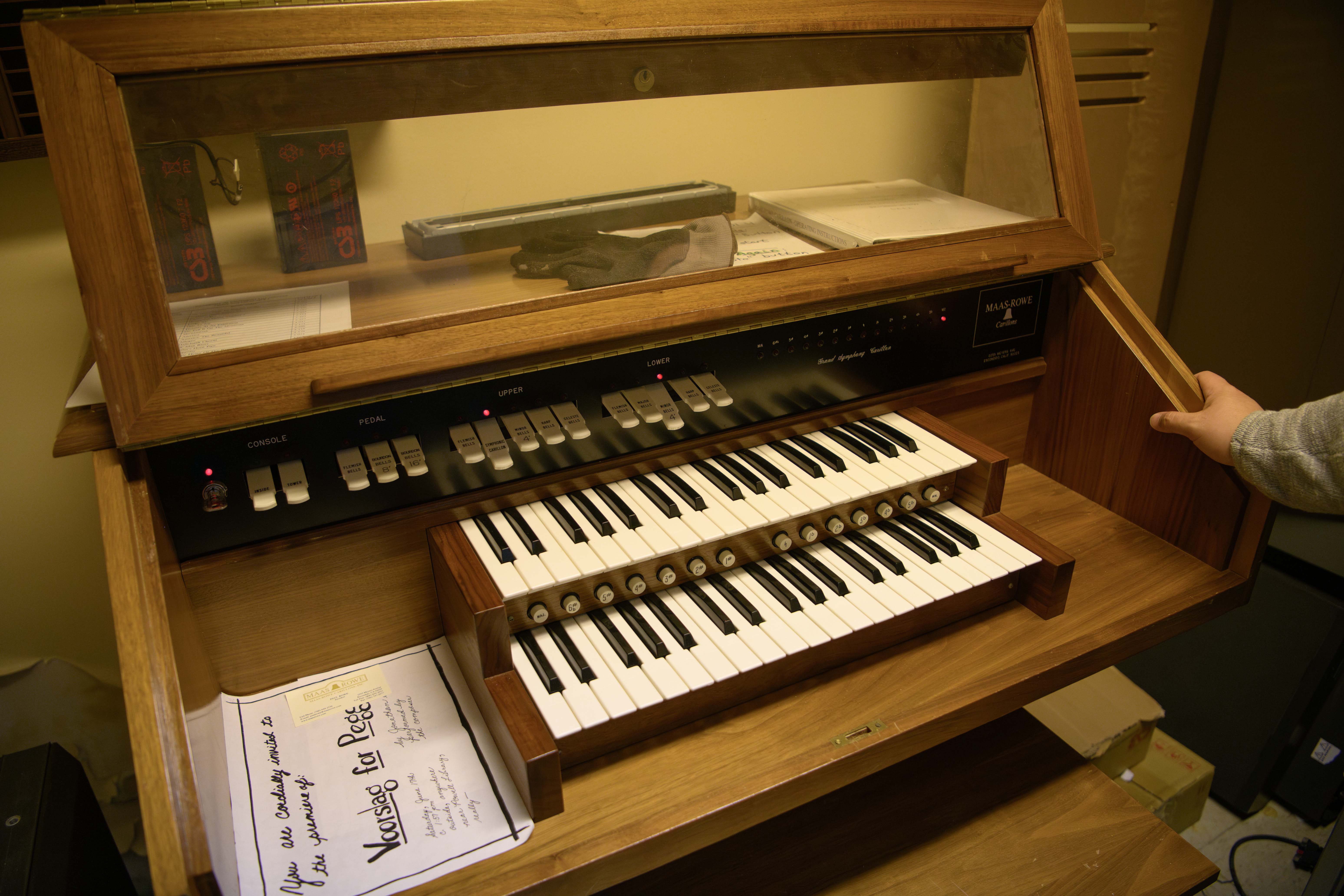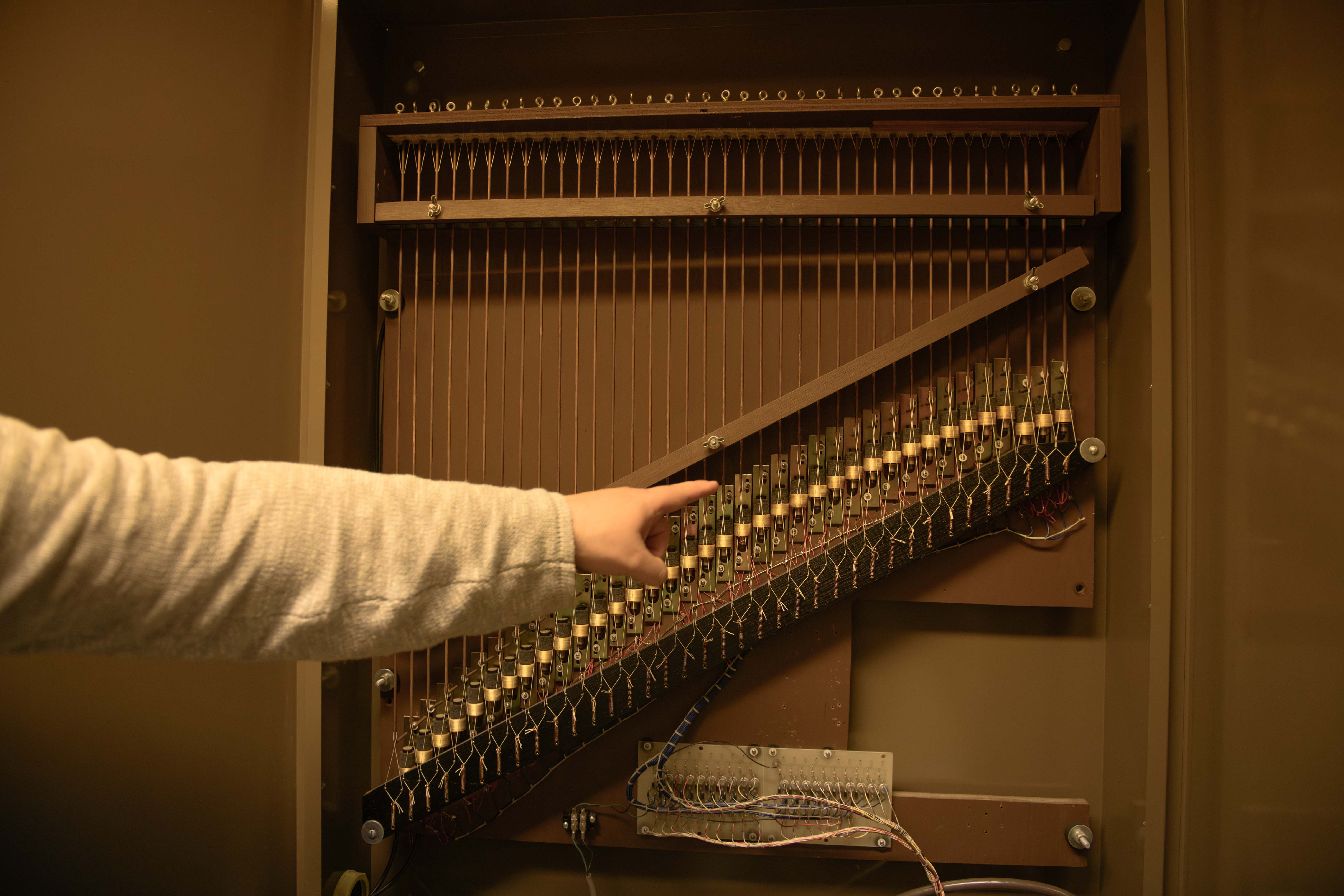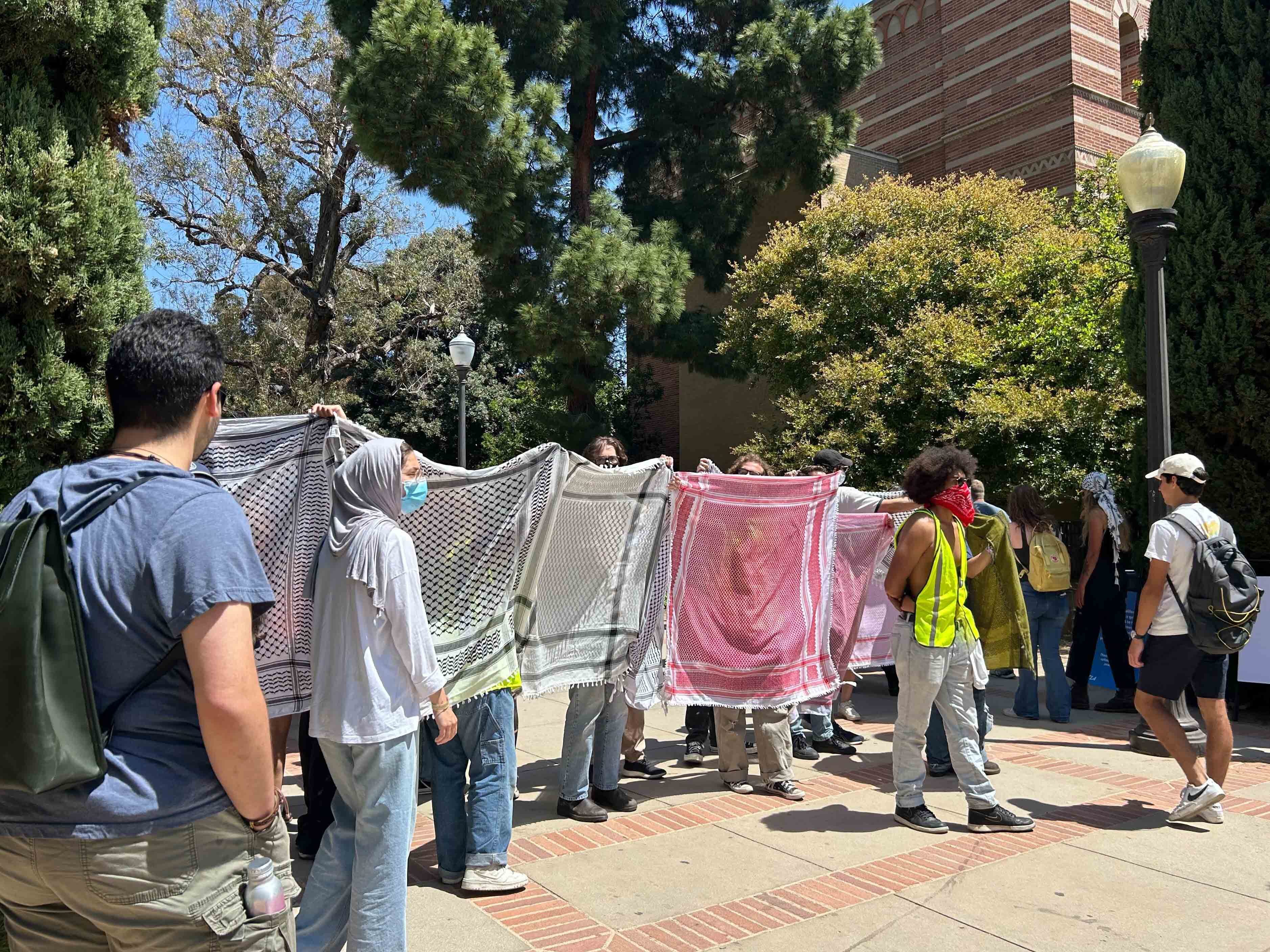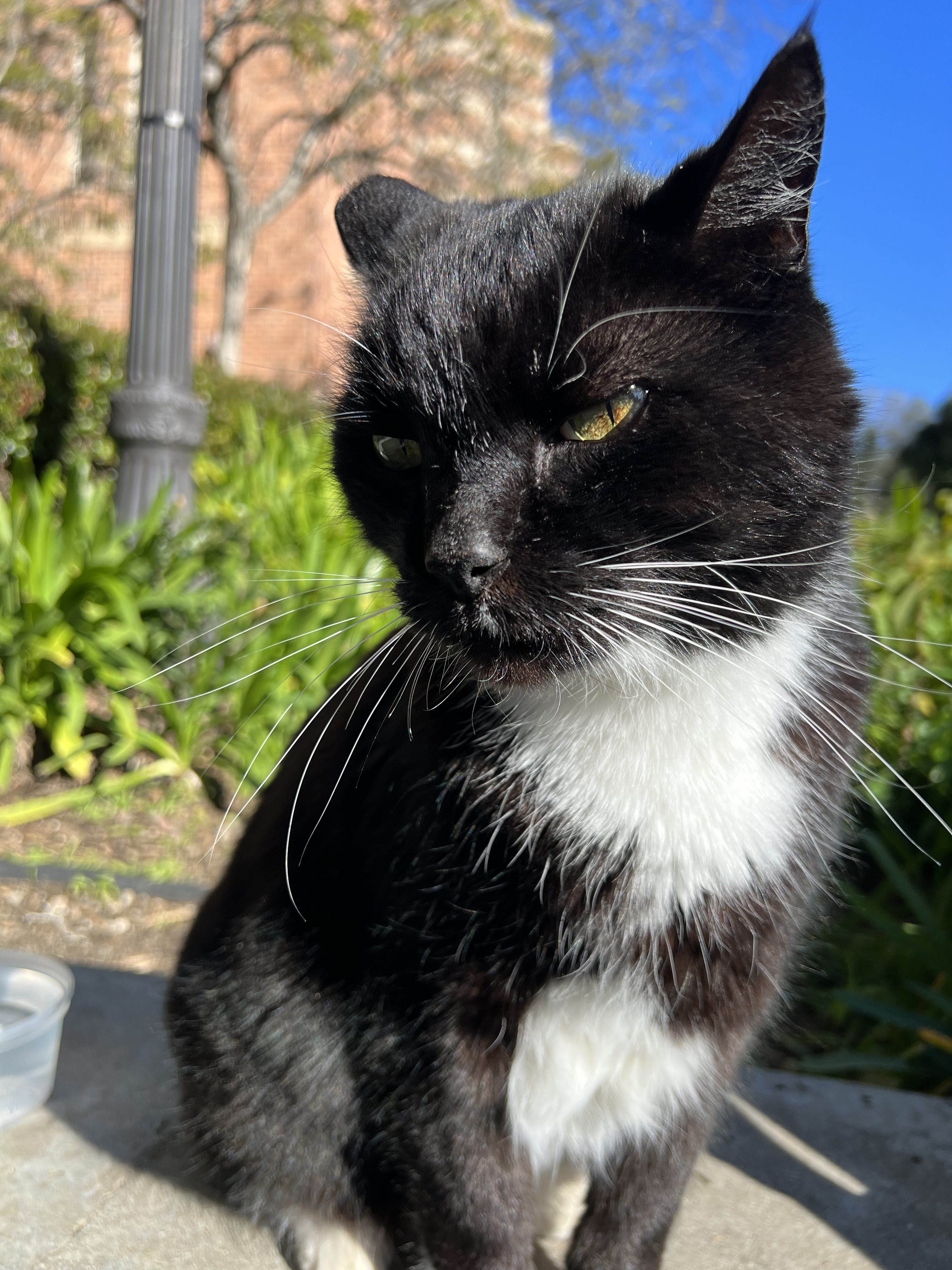Powell Library bells return after not ringing for multiple quarters

A carillon instrument in the basement of Schoenberg Hall is pictured. Powell Library’s bells began ringing again during spring quarter after not doing so for fall and winter quarters. (Michael Gallagher/Assistant Photo editor)
By Saya Mueller
July 6, 2024 11:25 a.m.
This post was updated July 7 at 10:17 p.m.
One minute before a new hour begins, the echoing sound of Powell Library’s bells rings out around the UCLA campus – a sound not present during the fall and winter quarters.
Adam Gilberti, a museum scientist and adjunct faculty member who teaches a variety of music classes, oversees the hourly occurrence. Gilberti said an instrument known as the carillon, which is housed in the basement of Schoenberg Hall, mechanically programs bells to ring every hour. The sound travels from the instrument along a network of wires in UCLA’s underground tunnel system to speakers located in Powell Hall’s cupola, Gilberti added.
Although silent for a majority of the fall and winter quarters, the bells have since returned.
“It’s a part of our university culture,” Gilberti said. “It’s a part of the atmosphere at UCLA.”
Aashi Jhawer, a rising second-year business economics and human biology and society student, said the hourly chiming of the bells gave her a nostalgic feeling, as she remembered the same sounds coming from the bells of her middle school.
“It makes you feel like we’re all on a campus,” Jhawer said.
Carillons have been around since the Bronze Age, but Gilberti said the digitized system implemented in around 1946-1947 was bought from the Maas-Rowe Carillon Company.
Steel gray cabinets and a mechanical switch box juxtapose the yellowed keys of an old wooden keyboard in the cramped room where the carillon is housed. Within the boxes is a complex system of wires and tuning rods that produce the sound broadcasted over Dickson Plaza hourly, Gilberti said.
“What you’re actually hearing is in this box – these are the bells,” said Gilberti as he opened one of the metal cabinets. “There are tuned rods, and these rods are hit by an electromagnetic solenoid here. There are pickups underneath them – like the pickups of an electric guitar – and that amplifies the sound. It goes into preamps and then into amplifiers and then over to Powell.”

When asked about the challenges that come with maintaining such an old instrument, Gilberti said digital glitches were one of the main issues. He said the bells may ring a few minutes earlier than the actual time because they are not synchronized with mobile phones.
Gilberti also said the carillon was turned off for building renovations during the fall and winter quarters and was difficult to reprogram once repairs were done.
“When Powell Library was doing its renovations, the system had to be shut down,” he said. “We had to shut it down again because they had to fix the electric lines, and it takes a lot to get it back up.”
Although the carillon is now primarily used to mark every hour, Gilberti added that the mechanized instrument also is able to program popular classical pieces such as Beethoven’s “Ode to Joy” and Mussorgsky’s “Pictures at an Exhibition.” Along with classical pieces, he said the carillon’s miniature keyboard attracted student and faculty composers alike.
In the future, Gilberti hopes to bring back live performances, which stopped during the pandemic, he said. Jhawer added that she would like to hear Disney songs and “Unwritten” by Natasha Bedingfield.
Tim Chen, a rising second-year civil engineering student, said the bells help him make it to class in the morning – particularly when he’s running behind schedule.
“(When) I go to my 8 a.m. (class), it sometimes reminds me how late I am,” he said. “Because everyone’s in a hurry, sometimes it’s good to get reminded of the time.”
Gilberti said the carillon’s archaic history and mystique add to the general character of UCLA’s campus.
“It’s a medieval instrument, and it almost completely died and went out of favor,” Gilberti said. “There’s a little bit of mysticism and magic to it that adds to the atmosphere of campus, and I think people really like it and appreciate it.”



